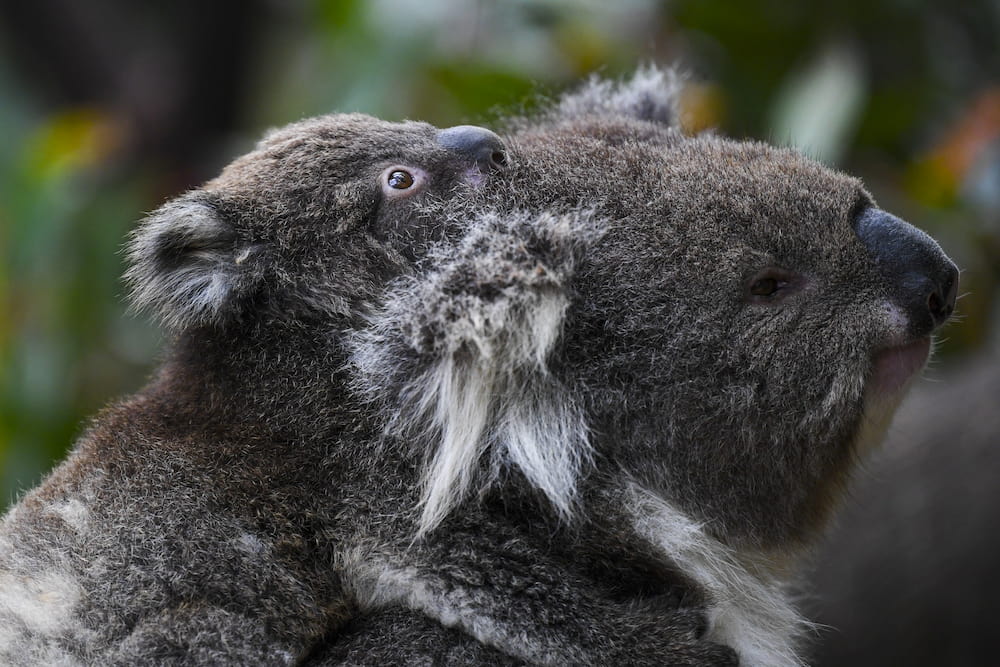Koalas will be listed as endangered, instead of vulnerable, across the ACT, NSW and Queensland in a bid to protect dwindling populations.
Federal Environment Minister Sussan Ley announced the conservation status downgrade on Friday in line with a recommendation by the government advisory body, the Threatened Species Scientific Committee.
“The impact of prolonged drought, followed by the Black Summer bushfires, and the cumulative impacts of disease, urbanisation and habitat loss over the past twenty years have led to the advice,” she said.
Since 2001, koala populations in NSW have declined by between 33 and 61 per cent, with a state parliamentary inquiry in 2020 warning the marsupial would likely become extinct before the middle of the century without urgent intervention.
At least 6400 koalas were wiped out by the 2019/20 summer bushfires alone.
Similarly, Queensland koala populations have at least halved since 2001 because of drought, fires and deforestation.
The federal government believes the endangered listing will highlight and help address threats to koala populations.
It wants Queensland, NSW and Victoria to sign up to a national recovery plan worth $50 million over four years.
“We are taking unprecedented action to protect the koala, working with scientists, medical researchers, veterinarians, communities, states, local governments and Traditional Owners,” Ms Ley said.
However, conservation groups who were instrumental in having the listing downgraded are frustrated by a lack of meaningful action to stop population declines.
“Koalas have gone from no-listing to vulnerable to endangered within a decade. That is a shockingly fast decline,” conservation scientist Dr Stuart Blanch said.
“Today’s decision is welcome, but it won’t stop koalas from sliding towards extinction unless it’s accompanied by stronger laws and landholder incentives to protect their forest homes.”
The International Fund for Animal Welfare said the endangered list was a “dark day for our nation”.
“This decision is a double-edged sword. We should never have allowed things to get to the point where we are at risk of losing a national icon,” IFAW Wildlife Campaign Manager Josey Sharrad said.
“If we can’t protect an iconic species endemic to Australia, what chance do lesser-known but no less important species have?”
The announcement comes days after fresh analysis by the Australian Conservation Foundation found the amount of koala habitat approved for clearing had increased every year since 2012, when east coast koalas were first listed as vulnerable.
The federal government has rubber-stamped the loss of more than 25,000 hectares of habitat, the ACF found – equivalent to 526,000 average-sized blocks of residential land, or about 10,400 Sydney Cricket Grounds.
Approvals were granted for 63 mostly mining projects in Queensland, NSW and the ACT, the ACF said.
But Ms Ley said those developments required offsets, to replace koala habitats.
“It is true that we live there the koalas live,” she told the Nine Network on Friday.
“This announcement is about making sure that (offset programs) is done in the best and strongest possible way – continuous areas of habitat that are good for koalas.”
Nature campaign manager Basha Stasak said the decision to list the koala as endangered was “embarrassing for Australia on the world stage”.
“The extinction of koalas does not have to happen,” she said.
“We must stop allowing their homes to be bulldozed for mines, new housing estates, agricultural projects and industrial logging.”
The federal government has listed the marsupial as endangered as it continues to fight attempts to downgrade the Great Barrier Reef’s UNESCO listing to “in danger”.
However, the government does not believe the two can be compared and argues the reef shouldn’t be singled out because climate change is threatening all World Heritage sites.
Get all the latest Canberra news, sport, entertainment, lifestyle, competitions and more delivered straight to your inbox with the Canberra Daily Daily Newsletter. Sign up here.



